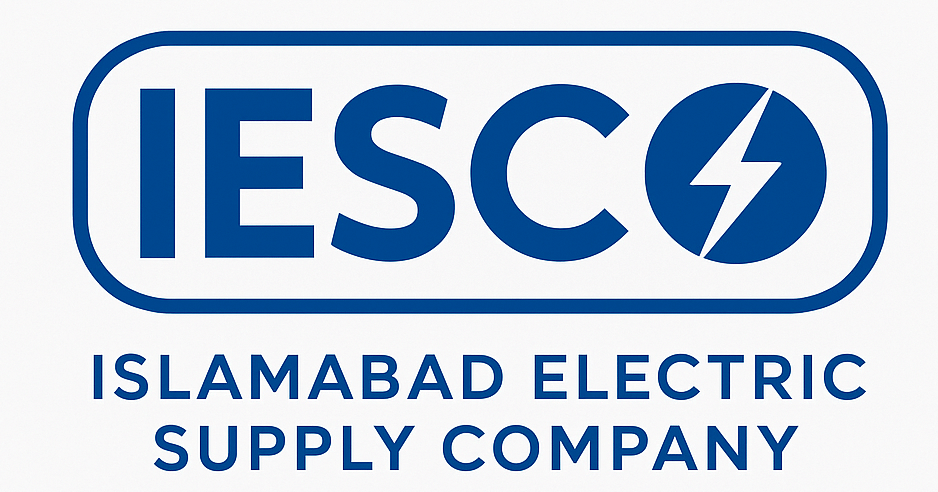IESCO Grid Station: Locations, Functions & Power Distribution Guide (2025)
When it comes to keeping the lights on in our homes, offices, and streets, the Islamabad Electric Supply Company (IESCO) plays a vital role. As one of the key electricity providers in Pakistan, IESCO ensures uninterrupted power distribution across Islamabad, Rawalpindi, and surrounding regions. But have you ever wondered what keeps this massive system running smoothly behind the scenes?
The answer lies in the backbone of the power supply system—IESCO grid stations. These grid stations serve as critical hubs that manage the flow of electricity from high-voltage transmission lines to local distribution networks. Without them, a reliable electricity supply in Islamabad and Rawalpindi wouldn’t be possible.
Whether you’re a resident curious about how IESCO delivers electricity, or someone experiencing a power outage and wondering why—it all links back to these strategic power nodes. Understanding the role of grid stations in IESCO’s power distribution network can help you better navigate service updates, maintenance schedules, and even load shedding plans.
In this guide, we’ll take you through everything you need to know about IESCO grid stations, from their functions and locations to how they impact your daily life as a consumer.
What Is a Grid Station?
To understand how electricity reaches your home or business, you need to start with one of the most important pieces in the power puzzle: the grid station.
A grid station, also known as an electrical substation, is a facility where high-voltage power enters before distribution to cities, towns, and neighborhoods. Think of it as a power-handling center that receives bulk electricity from transmission lines and then regulates and redirects it through power lines to local feeders for safe delivery.
At the core of every grid station are key components like:
-
Transformers, which reduce or step down the voltage for safe usage.
-
Power lines carry electricity over distances.
-
Feeders, which distribute electricity to specific areas and neighborhoods.
This entire system ensures voltage regulation across the power network, maintaining a balance between supply and demand. The transformer capacity at each grid station is carefully designed to handle the needs of the connected region—whether that’s a residential block in Islamabad or an industrial zone in Rawalpindi.
In simple terms, without grid stations, we wouldn’t be able to convert and safely distribute the electricity that powers our everyday lives. These silent workhorses are essential for an efficient and uninterrupted power supply, making them a critical part of IESCO’s electricity transmission system.
Role of IESCO Grid Stations in Power Distribution
Ever wondered how electricity travels from far-off power plants to your home in Islamabad or your business in Rawalpindi? The answer lies in IESCO’s well-planned network of grid stations—the heart of its urban power distribution system.
IESCO (Islamabad Electric Supply Company) operates dozens of regional power supply units, each responsible for ensuring smooth and uninterrupted energy flow across its coverage areas. These grid stations act as the middlemen between the national grid and your neighborhood, helping manage and balance the electricity load for residential, commercial, and industrial zones.
To make this all happen efficiently, IESCO works closely with national authorities like:
-
NTDC (National Transmission and Dispatch Company) – which transmits high-voltage electricity from generation stations.
-
WAPDA (Water and Power Development Authority) – the backbone of Pakistan’s water and power development projects.
-
PEPCO (Pakistan Electric Power Company) – responsible for policy, monitoring, and performance oversight in the power sector.
Together, these entities ensure that electricity generated from various sources reaches IESCO grid stations safely and efficiently. Once the power arrives, the grid stations regulate the voltage and distribute it through feeders to different sectors—whether it’s lighting up homes, running schools, powering factories, or supporting hospitals.
This coordinated system of energy infrastructure plays a key role in minimizing outages, improving supply reliability, and keeping up with growing demand in major cities like Islamabad and Rawalpindi.
So next time you flip a switch or charge your phone, remember the invisible but powerful network of grid stations working tirelessly behind the scenes.
Maintenance and Shutdown Schedules
To ensure safe and reliable electricity, IESCO regularly conducts scheduled maintenance on its grid stations and feeder lines. These temporary shutdowns are essential for upgrading aging infrastructure, preventing unexpected breakdowns, and improving overall service quality across Islamabad, Rawalpindi, and surrounding areas.
During these maintenance windows, specific areas may experience short-term power interruptions. This is commonly referred to as a scheduled maintenance outage, and it usually involves feeder-wise power shutdowns—where electricity is temporarily turned off for a particular feeder or substation area while repairs or upgrades are completed.
To help residents and businesses prepare in advance, IESCO provides timely notifications about upcoming maintenance schedules. You can:
-
Visit the official IESCO website for outage alerts.
-
Check your local feeder outage list online.
-
Follow real-time updates through social media or local news.
-
Subscribe to SMS notifications for personalized alerts.
These updates are crucial, especially for homes with medical equipment, businesses that rely on uninterrupted power, and anyone working from home. Real-time outage updates help residents plan accordingly, minimizing inconvenience and ensuring safety during planned shutdowns.
Feeder System and Load Management
Behind every light that turns on with a switch and every appliance that runs smoothly, there’s a well-coordinated system quietly working to deliver uninterrupted power. One of the key parts of this system is the feeder.
In simple terms, a feeder is a specialized power line that carries electricity from an IESCO grid station directly to specific neighborhoods, commercial areas, or industries. Each feeder system is carefully mapped and monitored to handle a particular load, depending on the area’s consumption patterns.
But what happens when demand surges—like on a hot summer afternoon when every home has its air conditioner running? That’s where load management comes into play.
To prevent transformer overloads and unexpected power breakdowns, IESCO uses smart electricity flow monitoring tools to balance the load across different feeders. This means:
-
Shifting power loads between feeders when needed.
-
Temporarily cutting off supply in low-priority zones to protect the overall system.
-
Using real-time data to predict and prevent overload situations before they occur.
For consumers, this strategic approach ensures more stable voltage levels, fewer unexpected outages, and better control over electricity distribution—especially during peak hours.
So, while you may never see a feeder or step inside a grid station, their role is critical to your daily comfort. IESCO’s load management strategies are designed to keep your power on, your appliances safe, and your experience hassle-free.
Upgrades and Future Plans
As our cities grow and our energy needs evolve, IESCO isn’t standing still. In fact, it’s taking bold steps to future-proof the region’s electricity infrastructure. From smart grid transformation to expanding its network of grid stations, IESCO is investing in the technology and systems that will power the next generation.
One of the most exciting changes is the shift towards digital monitoring and smart energy management. Through smart monitoring, IESCO can now track electricity flow in real-time, detect faults faster, and respond to outages more efficiently than ever before. This leads to better service reliability and quicker recovery during emergencies.
To meet the rising demand from growing urban populations in Islamabad, Rawalpindi, and surrounding areas, IESCO is also working on expanding its grid station network. New substations are being planned and existing ones upgraded to enhance energy infrastructure and reduce the burden on older systems.
Another major focus area is sustainable energy transmission. IESCO is actively exploring ways to integrate renewable energy sources into its supply chain while strengthening its transmission lines to handle the added capacity. This is part of its broader commitment to future capacity planning—ensuring that the grid remains efficient, scalable, and eco-friendly.
IESCO is upgrading its grid network to meet modern energy needs, and these changes will benefit every consumer through a more stable supply, reduced outages, and smarter energy use.
The future is electric, and IESCO is lighting the way forward.
How Consumers Benefit
All the behind-the-scenes upgrades at IESCO—from smart grid technology to expanded substations—aren’t just about better infrastructure. They’re about you, the consumer. These improvements are directly enhancing the way electricity is delivered, maintained, and restored across Islamabad, Rawalpindi, and neighboring cities.
The most noticeable benefit? Improved power reliability. With stronger systems and modern load management, breakdowns are becoming less frequent, and voltage levels are more stable—even during peak demand.
When outages do occur, the response is faster than ever before. Thanks to digital monitoring and real-time tracking, IESCO teams can now detect faults quickly and restore power without unnecessary delays. This means less waiting and more peace of mind.
And that’s not all. IESCO is also making it easier for you to stay informed. Through digital outage alerts, SMS notifications, and online platforms, consumers now have access to real-time updates and service interruption notices. No more guessing when the power will return—now, you get the information directly.
In short, IESCO grid station upgrades mean fewer power interruptions for you, faster maintenance response, and smarter communication every step of the way.
At https://iesco-online-bill.pk, we’re here to keep you updated so you can stay one step ahead—powered, prepared, and always connected.

FAQs
How can I find my nearest IESCO grid station?
You can find your nearest grid station by visiting the official IESCO website or checking with your local sub-division office. Grid station locations are assigned based on electricity supply zones and feeder coverage.
Why does my area experience scheduled power outages?
Scheduled power outages are usually part of maintenance or upgrade plans. IESCO grid stations require periodic shutdowns to repair transformers, improve infrastructure, or manage feeder load distribution efficiently.
What is a feeder, and how does it affect my power supply?
A feeder is a power line that carries electricity from a grid station to your neighborhood or area. Load on each feeder is managed to prevent overloads. If your area is experiencing frequent outages, it could be due to feeder-level load issues or faults.
Where can I check real-time outage alerts from IESCO?
IESCO provides digital outage alerts through its official website, SMS services, and social media platforms. You can also visit https://iesco-online-bill.pk for updates, tips, and helpful links.
Is IESCO working on upgrading its power infrastructure?
Yes, IESCO is actively investing in smart grid transformation, energy infrastructure upgrades, and future capacity planning. These efforts are designed to reduce breakdowns and ensure a stable power supply across all service areas.
What should I do during a sudden power breakdown?
If there’s an unscheduled outage, first check if it’s a known issue through IESCO’s official portal. If not listed, you can report it by contacting your local IESCO helpline or visiting the nearest sub-division office.
Conclusion
From powering homes in Islamabad to fueling industries in Rawalpindi, IESCO’s grid infrastructure is the foundation of a stable and reliable electricity supply in the region. Each grid station, feeder, and transformer works as part of a well-connected network to ensure smooth energy flow, effective load management, and minimal service interruptions.
As IESCO continues to upgrade its systems with smart technology and sustainable planning, the benefits for consumers are clear—fewer breakdowns, quicker recovery times, and easier access to real-time service updates.
Staying informed is key to getting the most out of your electricity service. Make sure you regularly check IESCO’s official portals or follow verified sources to receive timely digital outage alerts, scheduled maintenance updates, and other important notifications.
Check your local grid station status or report an issue today!
Your awareness can make power management smoother—for you and your community.

